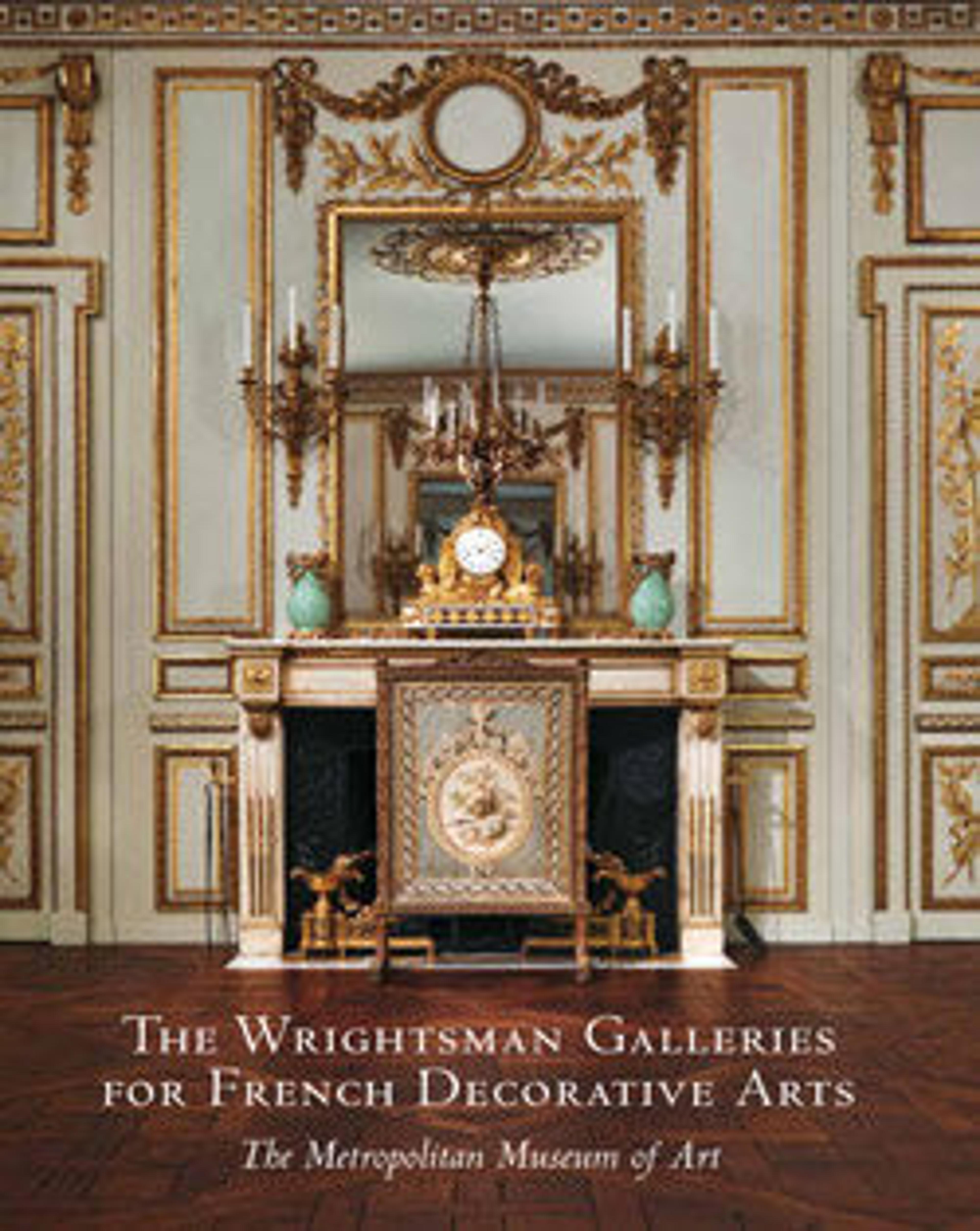Chimneypiece (cheminée)
The model of this imposing Neoclassical chimneypiece, incorporating large figures of female satyrs as supports of the architrave and mantel shelf, was repeated a number of times. Although commissioned for the Grand Salon Ovale of the Hôtel Thelusson in Paris, the chimneypiece appears never to have been installed there. It was used at the Hôtel de Massa instead, a residence rented by the banker Paul-Louis de Thelusson (b. ca. 1762) in January 1785. The earliest mantelpiece of this design appears to have been the one for the Paris hôtel particulier of Louise-Jeanne de Durfort, duchesse de Mazarin (1735–1781), for which Pierre Gouthière executed the bronzes in 1781. Made of blue turquin marble, that first mantelpiece is very well documented, and we therefore know that the architect François-Joseph Bélanger was responsible for its design and that the striking caryatid figures, their legs crossed and hands folded above their heads, were modeled by the sculptor Jean-Joseph Foucou. Gouthière was to supply five different mantelpieces for the Hôtel Thelusson but was able to finish the work for only four of them. The bronze figures and decoration of the fifth were done by François Rémond in 1784, and it is believed to be the one now in the Museum’s collection.
The bronze satyresses have a dark patination but their paraphernalia are gilded—the wreath of vine leaves and grapes in their hair, the drapery cascading down their backs, and the ivy girdle hiding their nudity. In addition, a gilded strap runs across the chests and a similar ribbon is tied around the hooves of these mythological half-figures, attendants of the wine god Bacchus. Musical instruments are suspended from the straps—a pair of cymbals on the left and a tambourine on the right—and bells are attached to the ribbons; thus these satyresses could make music during their drunken revelry. The lustrous and sensuous skin of their upper bodies starkly contrasts with their hairy goat’s legs. Unlike the other known examples of this design, the Museum’s mantelpiece is the only one in which the frieze is entirely decorated with repeating gilt-bronze ornament.
The bronze satyresses have a dark patination but their paraphernalia are gilded—the wreath of vine leaves and grapes in their hair, the drapery cascading down their backs, and the ivy girdle hiding their nudity. In addition, a gilded strap runs across the chests and a similar ribbon is tied around the hooves of these mythological half-figures, attendants of the wine god Bacchus. Musical instruments are suspended from the straps—a pair of cymbals on the left and a tambourine on the right—and bells are attached to the ribbons; thus these satyresses could make music during their drunken revelry. The lustrous and sensuous skin of their upper bodies starkly contrasts with their hairy goat’s legs. Unlike the other known examples of this design, the Museum’s mantelpiece is the only one in which the frieze is entirely decorated with repeating gilt-bronze ornament.
Artwork Details
- Title:Chimneypiece (cheminée)
- Designer:After a design by François Joseph Belanger (French, Paris 1744–1818 Paris)
- Modeler:Figures modeled by Jean-Joseph Foucou (1739–1815)
- Maker:Bronzes by François Rémond (French, Paris 1747–1812 Paris)
- Date:1784
- Culture:French, Paris
- Medium:Verde di Levanto marble; patinated bronze and gilt bronze
- Dimensions:H. 45-1/2 in. (115.6 cm.); W. 73-7/16 in. (186.5 cm.); D. 17-3/4 in. (45.1 cm.)
- Classification:Sculpture-Architectural
- Credit Line:Gift of Mr. and Mrs. Charles Wrightsman, 1976
- Object Number:1976.227
- Curatorial Department: European Sculpture and Decorative Arts
More Artwork
Research Resources
The Met provides unparalleled resources for research and welcomes an international community of students and scholars. The Met's Open Access API is where creators and researchers can connect to the The Met collection. Open Access data and public domain images are available for unrestricted commercial and noncommercial use without permission or fee.
To request images under copyright and other restrictions, please use this Image Request form.
Feedback
We continue to research and examine historical and cultural context for objects in The Met collection. If you have comments or questions about this object record, please contact us using the form below. The Museum looks forward to receiving your comments.
